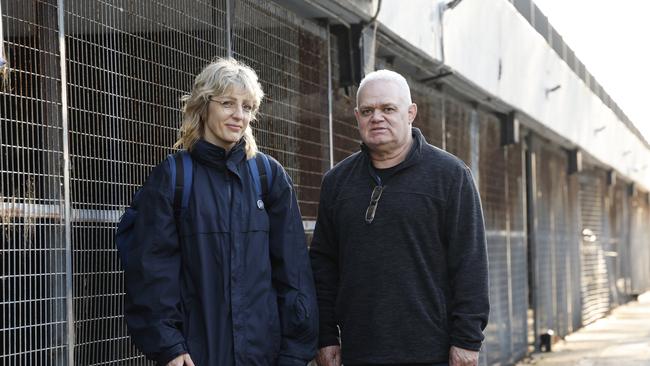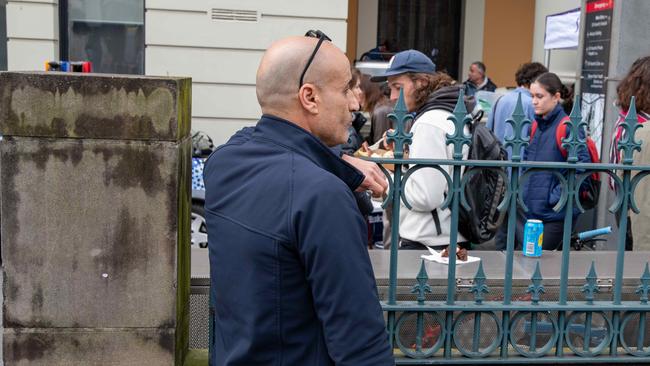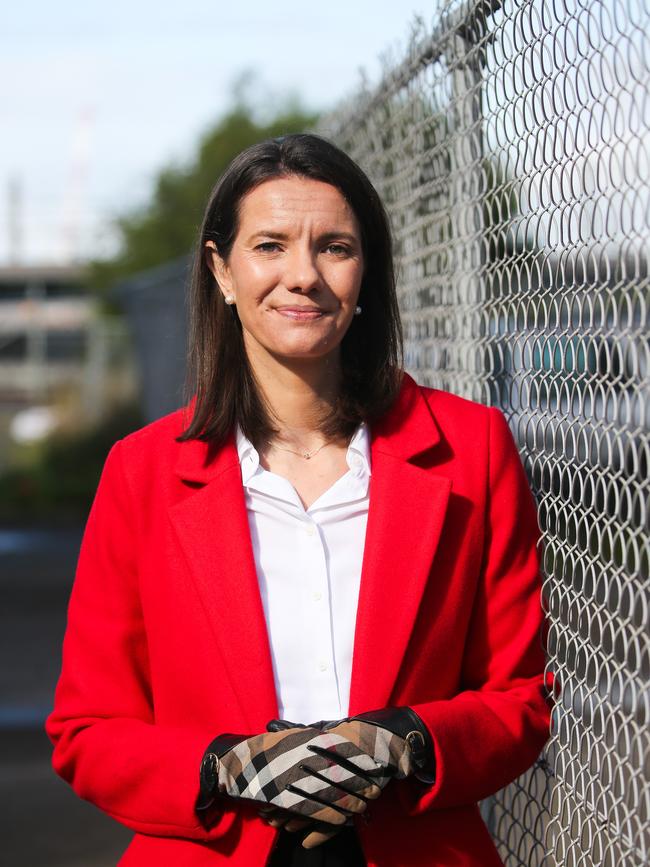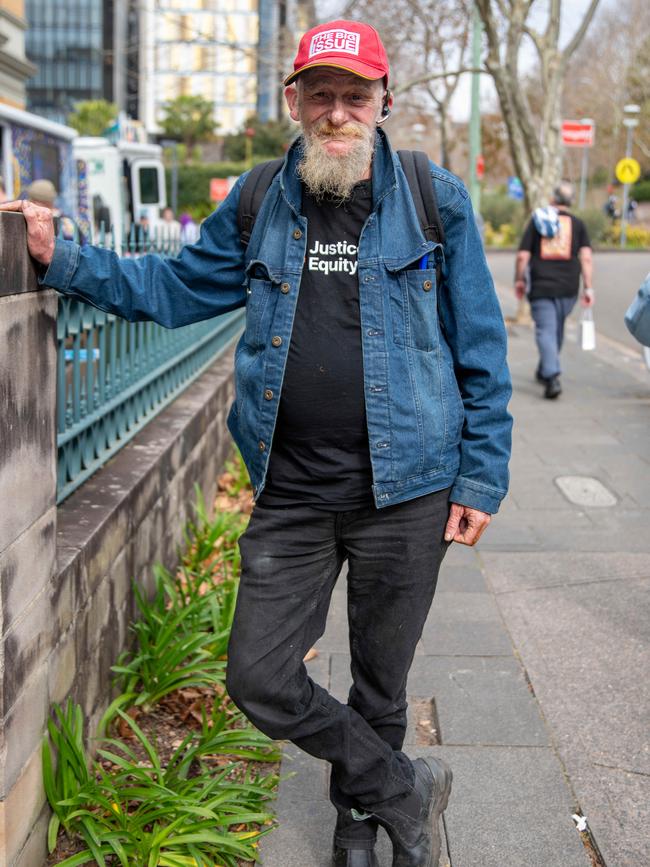These are the faces of the housing crisis — you could be next
Thousands of people are sleeping rough across the state; tens of thousands more make up our ‘hidden homeless’. Here are some of their stories.
NSW
Don't miss out on the headlines from NSW. Followed categories will be added to My News.
Jack was a university lecturer before a costly divorce saw him hit rock bottom and he’s never recovered, spending the last few decades sleeping rough – on trains, in parks and railway stations.
Trans woman, Thai native Bam, was to be sponsored by her Australian partner for a visa but when the relationship turned abusive she was forced to leave, with no place to stay.
When Covid restrictions saw work dry up for self-employed carpenter Ben, he faced homelessness for the first time, keeping his situation secret even from his loved ones.
While refugee Adam has spent seven years fighting for the right to be able to earn his keep, rather than spend his nights sleeping atop cardboard boxes under a railway bridge.
These are just a handful of the faces of Sydney’s homelessness crisis – all of them well spoken and passionate not just about getting help for themselves, but for the other “voiceless” members of a community no one wants to be a member of.

Yet it drives home what those who help deliver services can attest to – that anyone can become homeless, that many of us could be just a few “life moments away” from the streets.
More than 2000 people are sleeping rough across the state according to the 2024 NSW street count, including around 300 in the City of Sydney. The NSW government’s fifth annual street count was undertaken between February 1 and March 1, and showed a 26 per cent jump in rough sleepers compared to 2023.
It’s just the tip of the iceberg – just six per cent of people experiencing homelessness are sleeping rough. There’s around 35,000 ‘hidden homeless’ across the state – people in crisis accommodation, rooming houses, insecure housing, overcrowded dwellings or couch surfing.
Rising interest rates and cost-of-living pressures are perpetuating the problem, which is only exacerbated by the state’s rental and housing crisis.
It’s been a chilly winter – with minimum temperatures plummeting to an icy seven degrees most nights this month according to data from the Bureau of Meteorology.
It hadn’t warmed up much beyond that on a recent morning, when the Saturday Telegraph joined homeless outreach teams on their daily patrol of Sydney’s homeless hotspots including Hyde Park, St James Station’s tunnels and outside the State Library – just steps away from State Parliament.

“It’s been a difficult winter already – with quite a few people having passed away on the streets,” St Vincent’s Hospital outreach nurse Erin Longbottom tells us.
“Often homelessness is caused by intergenerational poverty, trauma and disadvantage. But we’ve seen an increase in people sleeping rough who might never have got to that point and I think cost-of-living issues are forcing more and more people into homelessness.”
Ms Longbottom, nursing unit manager for St Vincent’s Homeless Health Service, said the team offered a “soft entry point” into the healthcare system for rough sleepers – many of whom harboured distrust and fear of mainstream services.
“We work in partnership with housing outreach teams because people need both – access to housing and healthcare,” Ms Longbottom said. “The two are connected – someone’s health can cause them to become homeless or homelessness can cause their health to deteriorate.
“Many don’t accept our services for quite some time – but we just keep trying to chip away at offering support. We might bring them a pair of shoes, and then they might be more willing to accept help with their health and housing.”

Early intervention helped ensure minor health concerns didn’t turn into major issues; in turn reducing presentations to emergency departments as well as hospitalisations. In the backpack she takes to the streets, Ms Longbottom carries dressings and bandages; equipment to take vital signs, tests and swabs; flu vaccines to help protect the most vulnerable community.
“We see everything – from respiratory tract infections and skin infections that are exacerbated by living in the elements,” Ms Longbottom said.
“The homeless population suffers a much higher rate of chronic disease – such as diabetes – which is easily treatable but traditional models of care are often inaccessible to them.
“We’ve seen a sharp increase in cancer recently – can you imagine trying to go through chemotherapy and other treatments while being homeless?
“And we see people with mental health issues, cognitive impairment – the rate of suicide and other premature deaths is far higher.”
First Nations people are over-epresented in homelessness statistics; refugees too seeking asylum on Sydney streets – people who’ve stayed visas, international students who’ve fallen into crisis.
People like Adam, who came to Australia from Tunisia a decade ago, yet has slept under a railway bridge for several years.

The 53-year-old can’t return home for safety reasons; is articulate and well presented – he wants to work and pay his way but he’s denied that chance. He spoke to the Saturday Telegraph at the annual street party organised by St Vincent’s hospital for homelessness week last week.
“I’m a normal person,” he said, “but my situation has pushed me into homelessness.
“I have refugee status in Australia but for seven years I’ve been waiting for immigration to process my visa to give me the right to work.
“I do get a small fortnightly payment and had accommodation for a time but had to spend all my day searching for food – so six years ago I had to make a choice between sleeping well or eating well.”
Adam doesn’t feel safe on the street after he was brutally attacked a year ago, leaving him with double vision in one eye: “All because I was asked for a cigarette, and said I didn’t have one”.
He keeps to himself; waking each morning around 7am to get breakfast from one service; a shower and to wash his clothes at another. Before long it’s time for lunch from another charity, then dinner and back to his spot.
Many keep to a certain spot; others move around, such as Jack who doesn’t stay in one spot – or town – for too long.
“Divorce was the issue for me,” he said. “I’ve spent 30 years with nowhere to go. I spend time in Sydney – sleeping on trains and various spots around the city. I pack my stuff up every day – there’s a few places to hide things like bedding and clothes away.
“But then I need to get out to the country – and I go and volunteer with others to go spend time helping farmers repair fences and the like after natural disasters, like bushfires.”

One day the former uni lecturer hopes to find a stable home. He keeps in touch with his son and is looking forward to attending his wedding soon.
Vinnies volunteers have helped him find a suit, and a nurse at St Vincent’s tied a tie for him – as he’d forgotten how. Now he just needs to tighten it on the big day.
”He wants his father and mother at his wedding,” Jack said.
Sadly, Australia has the OECD’s third highest rate of homelessness – the highest homeless rate languishes with New Zealand. Scandinavian countries like Finland are at the other end of the scale, seemingly winning the battle against homelessness by making ending homelessness a national priority, building homes for the homeless, and looking after them once housed.
NSW Minister for Housing and Homelessness Rose Jackson said her government was keen to learn from countries like Finland – and apply solutions to the state’s homelessness crisis.
“We don’t need to reinvent the wheel, there’s things that work,” she said, “we just need to get some of them moving.”
The June state budget included an investment of $6.1 billion in social housing and a package of $527.6 million for homelessness services and temporary accommodation.
Ms Jackson said there was a focus too on the wraparound support so desperately needed for those facing homelessness; there’d also been a multimillion-dollar investment in getting mental health clinicians out with housing outreach teams. Plus the government’s homelessness innovation fund was looking at creative solutions to the problem.

“We’re looking at game changing approaches – we are committed to ending homelessness,” Ms Jackson said.
“It’s completely heartbreaking for me to see people sleeping rough when I go out with outreach teams or see people when I’m walking down the street. It’s what keeps me up at night.
“A lot of us see these individuals and think ‘that’s bad, someone should do something’. I feel like ‘if that’s not me, it’s no one else’.
“I feel an incredible responsibility as I know there’s a range of challenges and circumstances we haven’t addressed as a government that’s led to people being in these dire situations.
“I believe we can get to a point where homelessness is very rare, and if it does happen it’s only brief.”
Ms Jackson wants to help break stigmas about homeless people. “We need to challenge the idea of rough sleepers as hopeless individuals. They’ve either just been smashed by life or they’re mentally ill or have a cognitive disability and that’s not their fault yet it makes it hard for them to find, and keep, stable housing.
“It’s our mission to help them do that.”
There are many services and charities that do their best to help – providing food, clothing, bedding, a place to shower and wash clothes.
For trans woman, Bam, it was an olive branch from the Salvation Army that has kept her off
the streets – a much-needed space in temporary accommodation.

“I came here from Thailand to study and met my former partner and we were living together for several years and he was sponsoring me,” she said.
“But the relationship broke down due to domestic violence, and my visa status changed and I had no work rights, no Medicare, and I’ve been fighting for permanent residency since 2017.
“I’ve gone from one friend’s house to another, it’s too dangerous for me as a trans woman to live on the streets, and now the Salvation Army has opened their arms to me and found me crisis accommodation.
“I’m grateful but one day I would like to have a home.”
It can be a vicious cycle for many rough sleepers – St Vincent’s Aboriginal health worker Tom Faulkner said many land back on the streets even after securing housing.
“People might not feel comfortable in housing once there – there’s a lot of pressure having a home and making it work – and that’s where ongoing support is so important to help people manage finances,” he said.
“A big part too is the loneliness they feel in a house – and the guilt they have that they got a house but their friends are still on the street.”

For carpenter Ben Oakley, the humanity and friendship he found in the rough sleeping community was a surprise.
“I spent a year sleeping on the streets after I wasn’t able to work at the start of the pandemic – I had a small business and it was too hard to maintain huge amounts of rent,” he said.
“After I whittled away my savings I started sleeping around Central Station and Surry Hills – I never stayed in the same spot.
“What I will say is being homeless restored my faith in humanity – the homeless community is so incredible; the services are great, you never go hungry.”
Ben never told his mother who lives in a regional area he was sleeping rough: “I didn’t want to worry mum”.
He found housing just before Christmas, but at first it was no gift.
“Being housed was actually hard – I felt my world had come crashing down,” he said. “On the street you can’t turn a corner without seeing someone you know, and when you get put in housing commission it can be scary.”

That’s why Ben has joined an advocacy group, Streetcare, so his lived experience of homelessness can help others – and his ambition is to become a social worker.
“I still ride around the shelters and speak to people – it’s nice to see a smile on someone’s face if they’re having a bad day,” he said. “I’ve found purpose.”
Dave Streatfield volunteers with The Big Issue, after spending 20 years on the streets, and it’s given his life more meaning too.
“Twelve years ago I finally got off the streets,” he said. “I was sick and tired of being sick and tired.
“I suffered mental illness from a young age and back in the ‘80s I sort of got lost in the system.
“Safety was the main concern, you can be at risk of harm and you get your belongings stolen too.
“I did get indoors but it took me a long time to get used to it. I still miss laying under the stars – that was the best part.”
Got a news tip? Email lisa.wachsmuth@news.com.au





